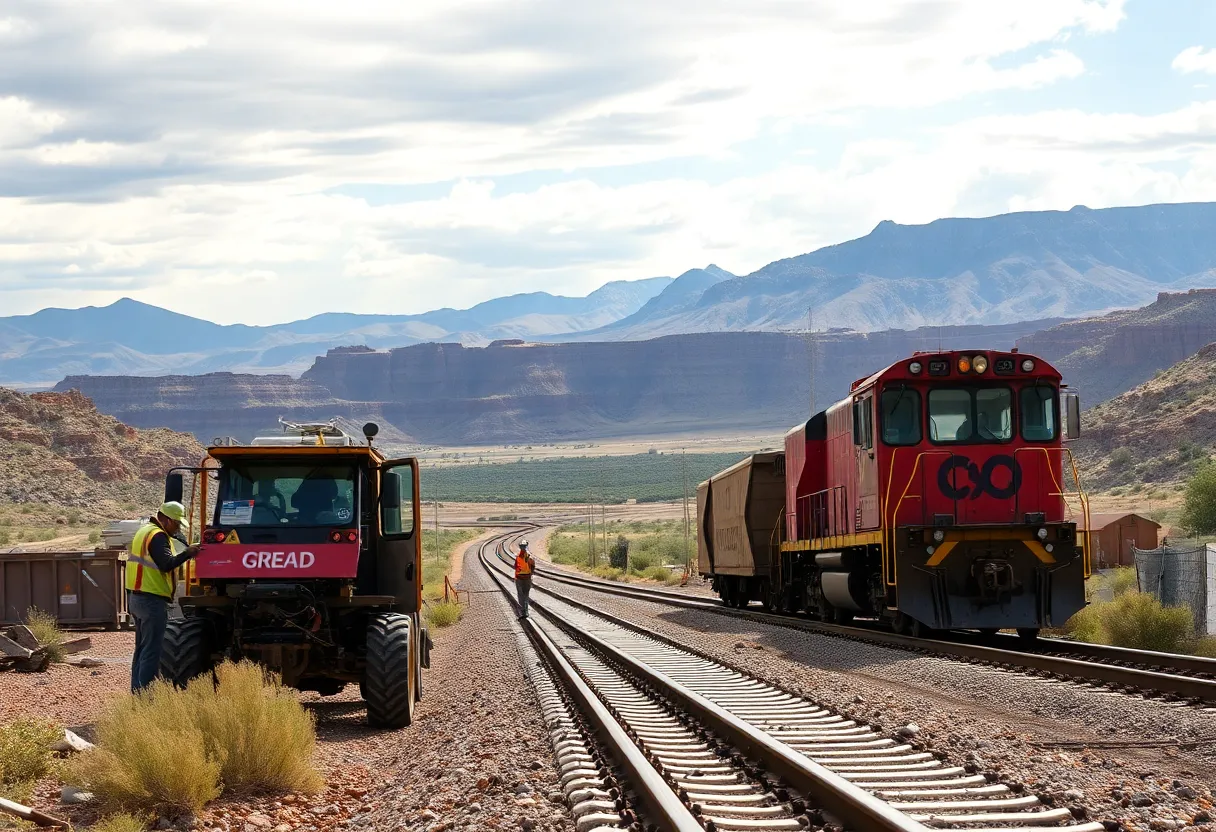News Summary
The U.S. Supreme Court has made a unanimous ruling that favors the Uinta Basin Railway project by narrowing the environmental review process under NEPA. This decision is seen as a crucial step forward for infrastructure development, allowing the railway to connect Utah’s oil-rich Uinta Basin to the national rail network. While this ruling has been celebrated by local officials for its potential economic benefits, environmental advocates worry about the implications for community health and environmental protections.
The Supreme Court Makes a Big Ruling for the Uinta Basin Railway Project
In a significant move for infrastructure development, the U.S. Supreme Court recently delivered a unanimous decision that could change the future of the Uinta Basin Railway project. This ruling came as part of the case titled Seven County Infrastructure Coalition v. Eagle County, Colorado, and it was decided with an impressive 8-0 vote. This decision is expected to make it easier for vital projects like the Uinta Basin Railway to move forward.
A Closer Look at the Ruling
The crux of the Supreme Court’s decision revolves around the National Environmental Policy Act (NEPA). The court narrowed the requirements for environmental reviews, suggesting that federal agencies do not need to examine upstream or downstream impacts of projects when conducting their assessments. This means that the environmental review process will not be weighed down by concerns about distant or indirect effects that aren’t directly tied to the project at hand.
The Uinta Basin Railway, which is set to stretch 88 miles, aims to connect the oil-rich Uinta Basin in Utah to the national rail network, facilitating the transportation of crude oil across the country. Proponents of the railway argue that it could potentially quintuple oil production in the area, providing a considerable boost to the local economy and the energy sector.
Background on the Legal Battle
Prior to this Supreme Court ruling, environmental groups and Eagle County, Colorado, challenged the Surface Transportation Board’s approval of the railway, arguing that the environmental review provided was insufficient. In a surprising twist, the D.C. Circuit Court sided with the environmentalists, which prompted the Seven County Infrastructure Coalition to take the matter to the Supreme Court.
Justice Brett Kavanaugh, who authored the majority opinion, conveyed that the environmental review process should serve as a guide for informed decision-making rather than as a hurdle with speculative analyses of unrelated impacts. This perspective reflects a growing bipartisan consensus that NEPA has become an obstacle to needed development projects, hampering opportunities in various regions.
What’s Next for the Uinta Basin Railway?
Despite this recent win for the Uinta Basin Railway supporters, the project is not out of the woods yet. It still requires further permits and reviews, including assessments from the Surface Transportation Board and other federal agencies. So, while the Supreme Court’s ruling is a step forward, the journey is far from over.
Response to the Ruling
Utah officials, including Governor Spencer Cox and Senators John Curtis and Mike Lee, have expressed their satisfaction with the ruling, seeing it as a victory for infrastructure development and economic opportunity in rural Utah. They believe that the railway will not only spur economic growth but also create jobs and enhance energy security.
On the flip side, environmental advocates are raising concerns. They argue that the ruling undermines crucial protections that NEPA offers, presenting potential risks to air quality, water resources, and community health. These advocates feel the decision may have broader implications, suggesting a shift in how federal agencies conduct environmental reviews for projects across the nation.
The Bigger Picture
As the debate continues, one thing is clear: this Supreme Court ruling has reignited discussions around the future of infrastructure projects in the U.S. The impact of its decision will likely be felt well beyond the borders of the Uinta Basin, shaping how environmental assessments are approached for future endeavors.
In a time where balancing economic growth and environmental protection is essential, this ruling may pave the way for a new approach in the ongoing quest to develop America’s infrastructure while ensuring community health and environmental protections are not entirely sidelined.
Deeper Dive: News & Info About This Topic
- Salt Lake Tribune: Uinta Basin Railway Supreme Court Ruling
- NBC News: Supreme Court Endorses Narrow Environmental Reviews
- Reuters: Supreme Court Sides with Utah Railway
- The Hill: Supreme Court Environmental Reviews Ruling
- Google Search: Uinta Basin Railway

Author: STAFF HERE AUGUSTA WRITER
The AUGUSTA STAFF WRITER represents the experienced team at HEREAugusta.com, your go-to source for actionable local news and information in Augusta, Richmond County, and beyond. Specializing in "news you can use," we cover essential topics like product reviews for personal and business needs, local business directories, politics, real estate trends, neighborhood insights, and state news affecting the area—with deep expertise drawn from years of dedicated reporting and strong community input, including local press releases and business updates. We deliver top reporting on high-value events such as Arts in the Heart Festival, Westobou Festival, and Masters Week. Our coverage extends to key organizations like the Augusta Metro Chamber of Commerce and Greater Augusta Arts Council, plus leading businesses in manufacturing and healthcare that power the local economy such as Textron Specialized Vehicles, Cardinal Health, and Nutrien. As part of the broader HERE network, including HEREAtlanta.com and HERESavannah.com, we provide comprehensive, credible insights into Georgia's dynamic landscape.





